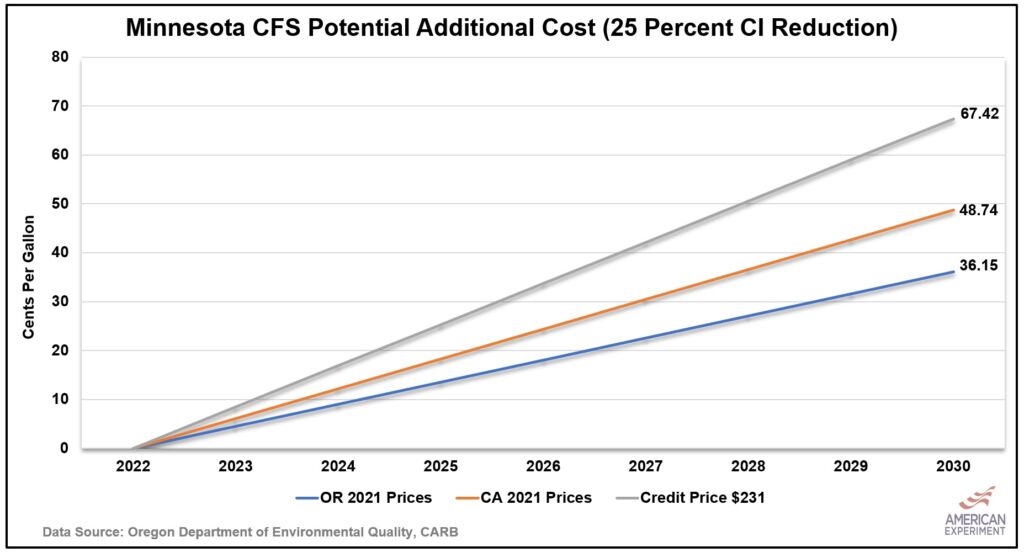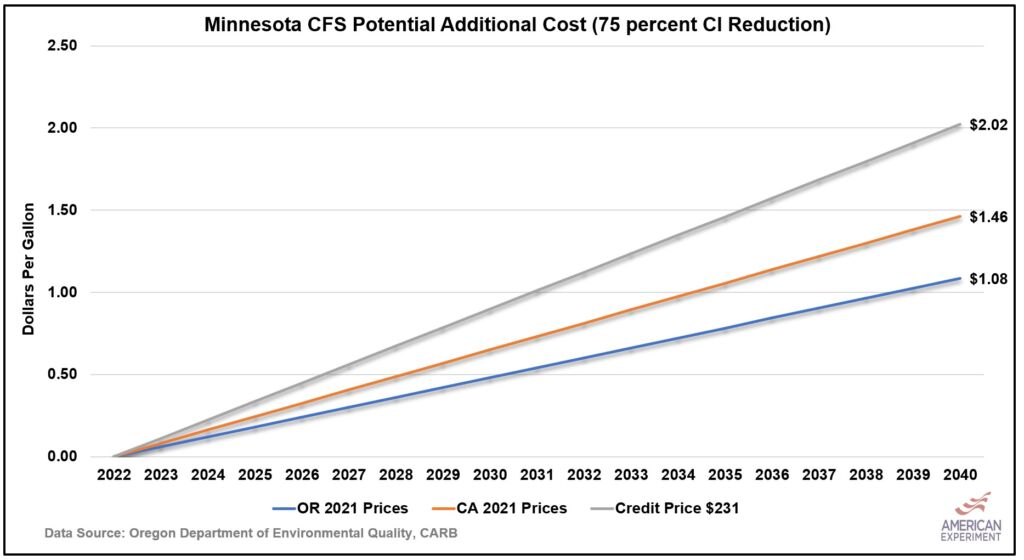DFL lawmakers make California fuel standard much more expensive
Liberal members of the DFL House of Representatives held an informational hearing on HF 2083 last week, which, if passed, would establish a California fuel standard (CFS) in Minnesota. You might not know that this legislation was amended to make it even more onerous and much more expensive.
The original bill called for a 20 percent reduction in greenhouse gas emissions from the fuel sector, below the 2018 baseline level, by the end of 2035. However, the new version called for a 25 percent reduction below the 2018 baseline by the end of 2030, a 75 percent reduction by the end of 2040, and a 100 percent reduction by the end of 2050.
These amendments will have an enormous impact on gas prices, making them much more expensive.
The original cost of the program
American Experiment’s new report, Gas Station Inflation, examines the cost of the original bill mandating a 20 percent reduction in the carbon intensity of Minnesota’s fuel supply, and found that it would increase the cost of gasoline between 29 and 54 cents per gallon by 2035 based on three different scenarios, shown in the graph below.

The scenarios are based on three different credit prices, one based on Oregon prices of $123.85, one based on California prices of $167, and one credit price of $231 per ton, which is the price needed to increase prices to 54 cents per gallon in accordance with estimates by Stillwater Associates.
Under the original policy, the average Minnesota household using 1,053 gallons of gasoline per year would pay an additional $304 to $568 per year in additional gasoline costs (in constant 2022 dollars) by 2035.
However, by making the standard more stringent and shortening the timeline for implementation, House DFL’ers are proposing to make the program much more expensive over a shorter timeframe.
The cost of the new legislation: 2030
Making the CFS more onerous over a shorter period would push fuel prices up further, faster. Requiring a 25 percent reduction in carbon intensity by 2030 would push up the cost of the program to 36 cents to 67 cents per gallon by 2030, as you can see in the graph below. This is assuming the same credit prices as we used in our report.

The stricter mandates would cost the average Minnesota household an additional $380 to $710 per year in additional gasoline costs (in constant 2022 dollars) by 2030.
The cost of the new legislation: 2040
Requiring a 75 percent CI reduction by 2040 would yield cost increases measured in dollars per gallon, not in cents per gallon. The graph shows that by 2040, gasoline costs would increase between $1.08 per gallon and $2.02 per gallon.

This means that by 2040, the average Minnesota family using 1,053 gallons of gas would pay an additional $1,137 to $2,127 per year under the California fuel standards. These numbers are so large that it is difficult to believe anyone could possibly propose such a policy, but the math doesn’t lie.
The CFS, especially in HF 2083’s current form, would be all pain and no gain because none of the additional money paid by Minnesota families and businesses would go to maintain our roads and bridges. Furthermore, the reduction in future temperatures resulting from lowering greenhouse gas emissions would be too small to measure.
You can tell your legislator that you oppose the California fuel standard by signing our petition at www.NoGasStationInflation.com. If you’ve already signed the petition, share it with your friends and family.